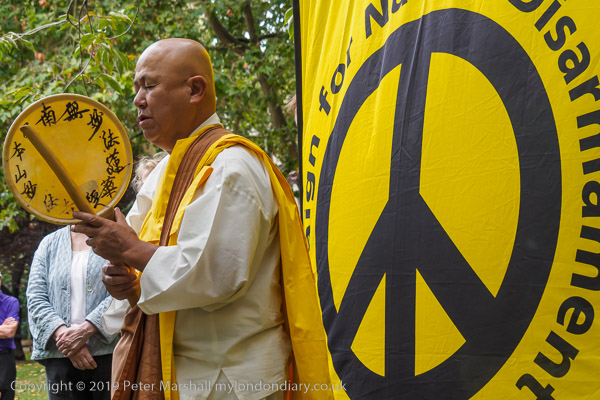Hiroshima Day – 6th August
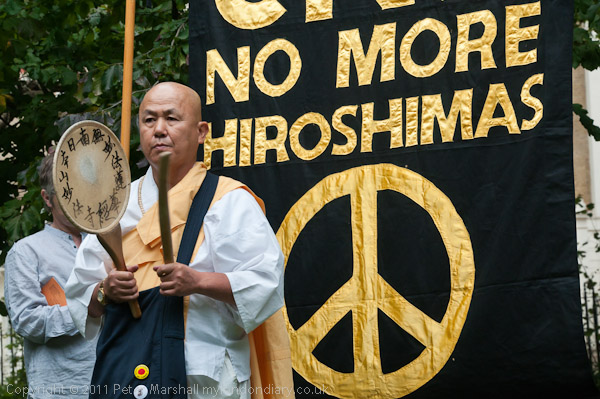
While I was still teaching full-time I was usually away from London in August, often in Paris or on holiday with friends in different parts of England. But since 2004 I’ve usually been in London on August 6th and attended and photographed the annual Hiroshima Day Ceremony organised by London CND close to the Hiroshima Cherry Tree in Tavistock Square. The first year for which I used a digital camera was 2004, when the event was compèred by local MP Jeremy Corbyn and among those attending were Michael Foot and Tony Benn. There was a significant non-attender too, Mordechai Vanunu had been invited to come from Jerusalem where he is under house arrest for having made public Israel’s nuclear weapons, but was prevented from coming by the Israeli government.
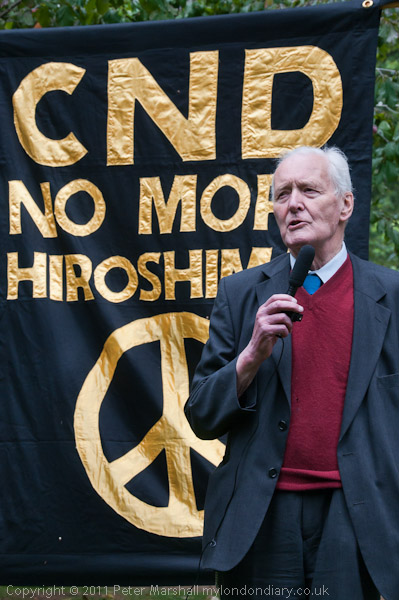
Back then I think the processing of digital files left something considerable to be desired, and the images on-line are rather dull, though I think could now be greatly improved if I found time to reprocess the raw files.
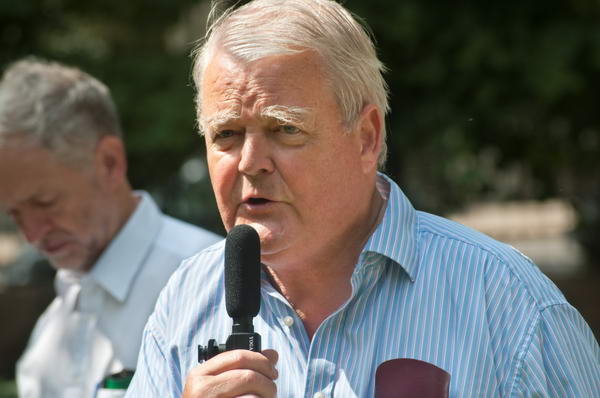
By the time photographed the ceremony in 2009, the pictures looked much better. Jeremy Corbyn was again introducing the speakers, who included CND stalwart Bruce Kent.
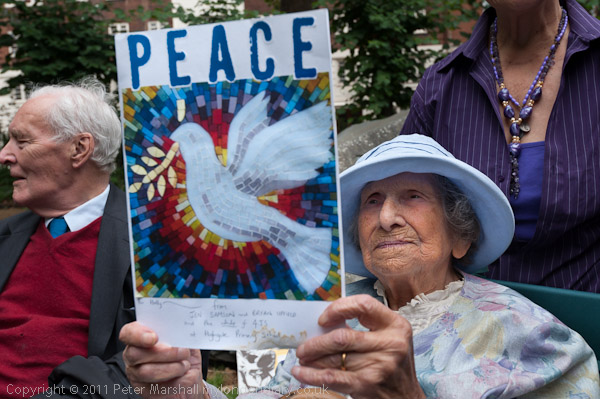
Bruce Kent spoke again in 2011, as did Tony Benn, but the star of the event was Hetty Bower who had begun her campaign against war in 1914 when she was a young schoolgirl, almost nine. Her’s was a remarkably powerful performance from a 105 year old who 97 years later was still taking part in every major UK anti-war march.
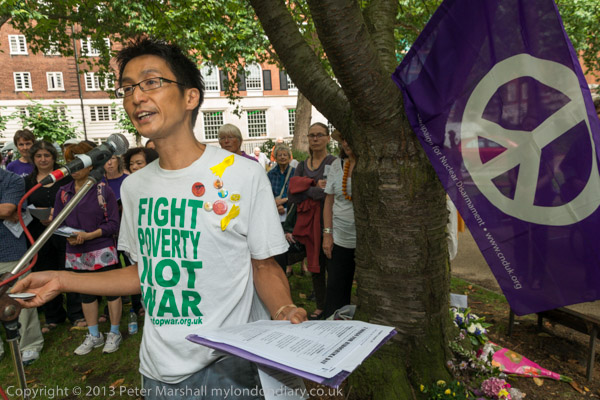
Hetty Bower was there again in 2013 and made a short speech. Other speakers included Bruce Kent, Peter Tatchell, Jeremy Corbyn, Walter Wolfgang, amd Green Party Leader Natalie Bennett as well as several peace activists, among them Val Brown from the London Guantanamo Campaign who talked about their work and the regular protests at the US Embassy, and Nobo Ono who spoke about the nuclear disaster at Fukushima and the weekly protests organised by Japanese Against Nuclear UK.
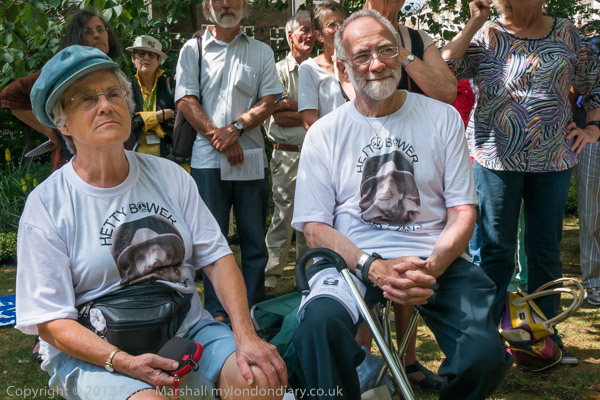
In 2014 my train to London was held up and I arrived after the event began, when a speaker was reminding everyone of the long life as a peace activist of Hetty Bower, and a several of those present were wearing t-shirts with her picture.
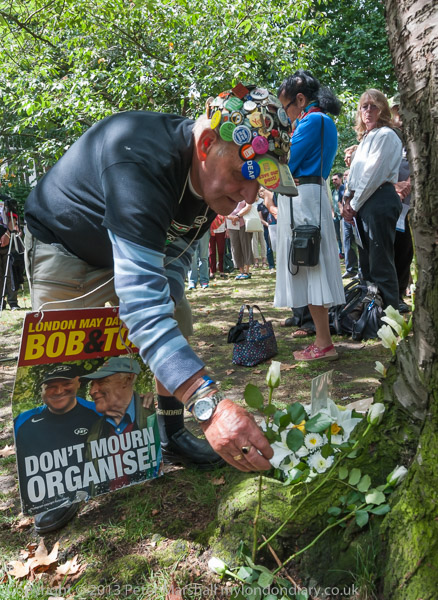
As usual, towards the end of the event there was a period of silence in memory of the dead and wreaths and flowers were laid at the Hioroshima Cherry Tree, planted in the garden here by the then Mayor of Camden in 1967.
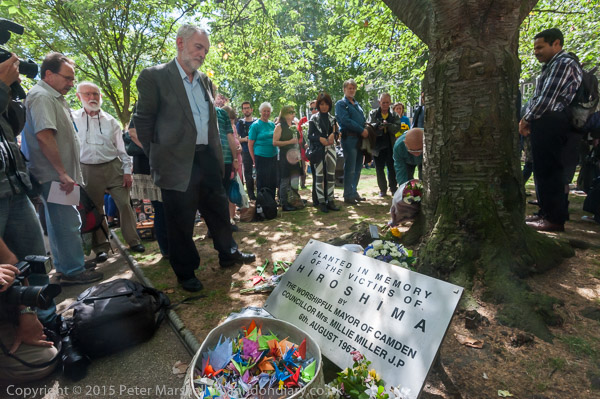
In 2015, because of the Labour leadership contest, the event which usually attracts only a small handful of press was attended by several TV crews and a large number of photographers, many of whom more or less ignored anything but Jeremy Corbyn, seen in my picture standing for a few moments in thought after laying a sunflower at the foot of the tree.
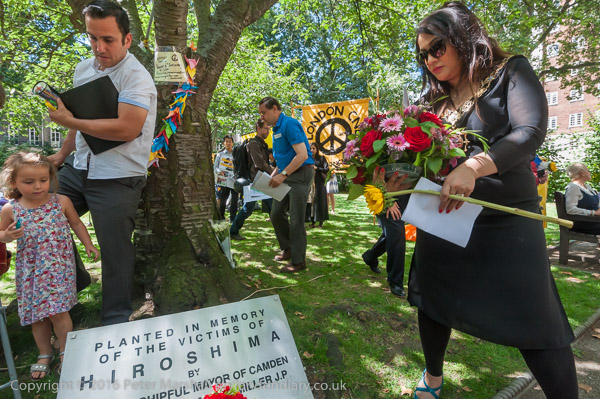
It was back to the usual lack of media interest in 2016, but the event was well attended with a number of familiar faces among the speakers, performers and the audience. Walter Wolfgang and Kate Hudson of CND, Mohammed Kozbar from Finsbury Park Mosque and Shahrar Ali from the Green Party were among those who spoke, and there were fine and very different perfomances from opera singer Anthony Flaum, radical folk singer Jim Radford and rap artist Potent Whisper, as well as the Raised Voices choir who as usual both performed on their own and led those at the event in singing some well-known peace songs.
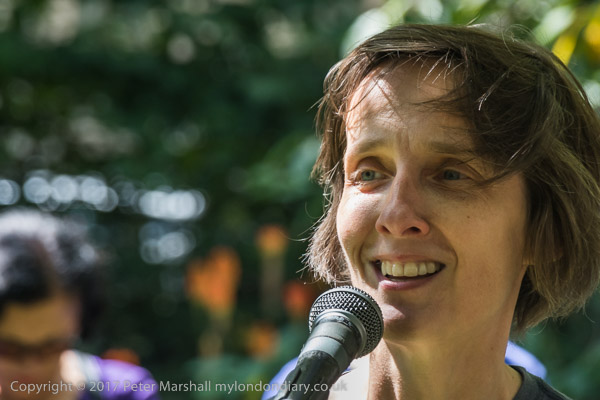
Among the more memorable speakers in 2017 was writer A L Kennedy – but as usual all were worth listening to.
You can also see pictures and read the accounts from 2018, 2019 and 2021 on My London Diary.
I hope be again in Tavistock Square for today’s London CND Hiroshima commemoration – Saturday 6th August 2022 – starting at noon.







